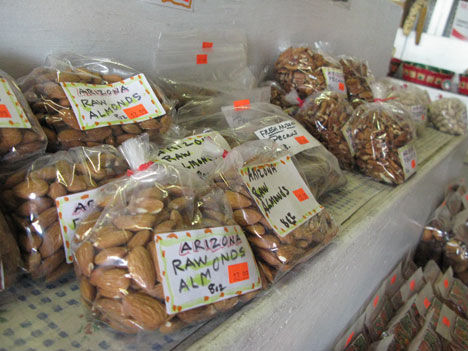
The desert can be unforgiving at times – hot, dry, dusty, and full of sand – which is exactly why we gardeners and homesteaders need to become master composters. In order to grow food, we need to plant the water prior to planting any seeds. To keep the water where it’s needed most, compost is particularly suited to the task. Good compost helps to retain moisture, provide nutrients to plants, keep your plants cool, and keep the roots aerated. It also helps to create a soil ecosystem that will keep your plants alive by providing for the critters that provide for your plants.
Since first coming to Tucson in 1993, I have seen (and made) almost all manners of compost systems. Most of them have been pretty lackluster, to say the least. Some have been no more than pretty sloppy piles of kitchen scraps thrown in a corner of the yard. My most successful compost piles have actually been piles, and have maintained their dignity and height through containment on several pallets connected together.
One of the biggest misconceptions about compost is that it will just happen. That is not compost, that is plain old decomposition. Decomposition is a passive result of breakdown of organic matter. Compost, on the other hand, is an active breakdown of the organics, involving some work on the part of the composter. One cannot simply throw things in a pile and hope for the best. The most rapid and efficient breakdown of organics happens when there are critical components present. These must-have elements are air and water. Most of the compost piles I have seen in the desert give no attention to the fact that it is dry out there, and whatever moisture was in the kitchen or yard wastes is quickly evaporated into the dry air. So, you occasionally need to give your compost a little shot of water to keep it doing its thing. Since our compost pile is a fairly close distance from our kitchen sink, we try to recycle our kitchen sink washing water by pouring into the compost a couple of times a week.
The second critical component is equally important, as without air in your compost, it starts smelling really badly. This is because the anaerobic bacteria (critters that can survive without oxygen) tend to produce really smelly by-products as they decompose your organic waste. But, luckily, it’s easy to get rid of them, and their smelliness. Just get a good pitchfork (or a shovel if you don’t have a pitchfork), and start turning it over. Arbico also sells a compost turner that is probably a little better suited to the task, and less backbreaking.
If your compost pile contains enough mass (a good rule of thumb is 3 x 3 x 3 feet), and has enough moisture and air to actively break down those organics, you will be able to open up the middle of the pile and feel the heat coming out of the pile. Once it reaches a critical temperature of 160 degrees for a minimum of 5 days, it should be good to go.
A good screening of your compost and a few weeks to “cure” it and cool it off is all that is required to start using it in your garden. It should have an earthy smell, and feel cool enough to handle. If it’s still too hot, wait a little longer to put it near your plants so that it doesn’t burn the roots.